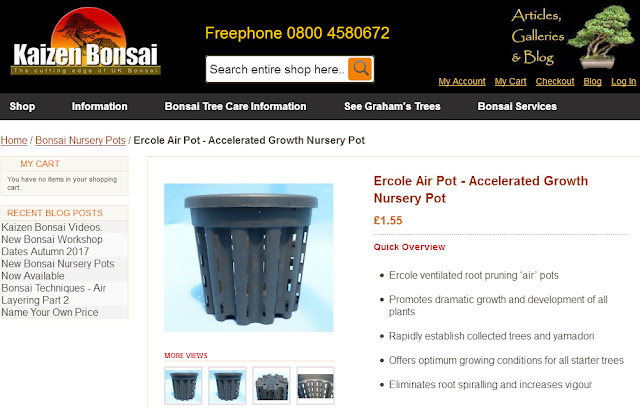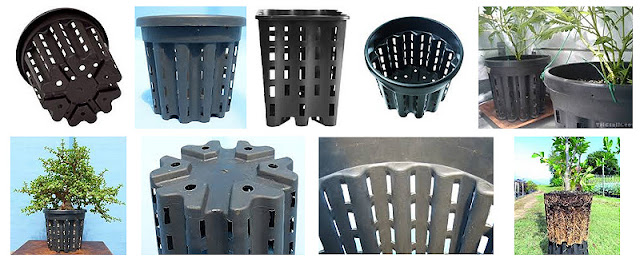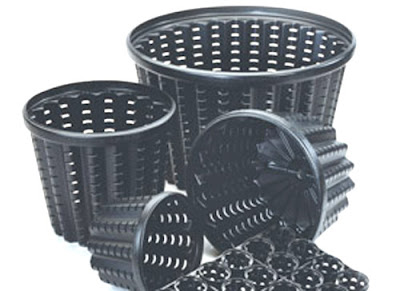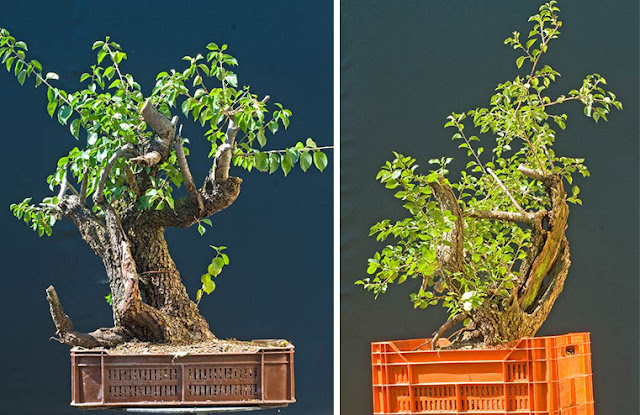I recently came across a July 2017 article on air pruning pots written by bonsai expert Graham Potter of Kaizen Bonsai, UK and the links are given below :
But he seems to be more of a vendor of such pots than a user, as I have not seen any visuals online, of him using such pots. His website stories and YouTube videos do not show it.
While the Ercole pot is a nice improvement on the traditional smooth walled nursery pots, it only gives partial air pruning, not full. The base of the pot is not designed for air pruning & will give you root circling still.
***
For full air pruning, use - Air-Pot
On Dec 2015, Paul Kellum, a bonsai apprentice, had posted an article Grow Better Bonsai with Air Pruning.
While the article rightly made the connection between bonsai and air pruning pots, Paul too seemed to be more of a vendor for the Air-Pots than an actual user, as there are no visuals of Paul's trees growing in air-pots, on his website.
Note : The Ercole pot is very similar to the Accelerator pot shown below but Ercole pot has a better design for bottom drainage. Still, both pots have the same drawback - of air pruning from the sides only. And both designs seem inspired by Dr. Carl Whitcomb's pioneering work in designing air pruning pots like the Rootbuilder pots.
Accelerator pot
It would be ironical for bonsai artists to complain about this. Rejecting colanders for deciduous trees bcos of frequent watering would be the equivalent of rejecting jet engines bcos they drink lot of fuel and instead, opting for more fuel efficient but ancient propeller engines.
and also read on this blog :
Bonsai nursery in China using Air-Pots
Walter Pall, is a bonsai expert from Germany and sometimes uses milk crates as grow pots for large collected bonsai trees, as seen below. But he does not mention air pruning anywhere on his blog. Though these containers air prune the roots, I am not sure if the motive for choosing these crates was for that purpose.
Jonas Dupuich of Bonsai Tonight is the only other bonsai expert (apart from Grahm Potter) that I have come across advocating air pruning containers (colanders) for growing bonsai & he is a user, not a seller. But he mainly uses it for conifers, just like some of the Japanese bonsai experts he mentions.
Jonas Dupuich of Bonsai Tonight is the only other bonsai expert (apart from Grahm Potter) that I have come across advocating air pruning containers (colanders) for growing bonsai & he is a user, not a seller. But he mainly uses it for conifers, just like some of the Japanese bonsai experts he mentions.
It seems to be a common misconception in the global bonsai community that air pruning is only for conifers or for sick trees. The fact is that many tree & plant species benefit from containers offering air pruning and better root aeration, not just conifers. Sure, the watering needs of your bonsai might go up in such a pot and need to be addressed but not at the cost of air-pruning and better aeration.
Bonsai = shallow containers = more watering
It would be ironical for bonsai artists to complain about this. Rejecting colanders for deciduous trees bcos of frequent watering would be the equivalent of rejecting jet engines bcos they drink lot of fuel and instead, opting for more fuel efficient but ancient propeller engines.
For those who feel that air pruning is no big deal & that just about any container will do, I recommend watching this YouTube playlist & upgrading your knowledge :
Bonsai nursery in China using Air-Pots






Root pruning pots made from stainless 1/2” hardware cloth lined with stainless window mesh screening = the perfect, nearly every lasting, non-toxic, non-plastic, non-UV-degradable, one time purchase, no animal can destroy it, you can slip it into display pots when necessary and disguise it with substrate and mosses, then when you remove it the wire pot can serve as a root pruning guide if any is necessary after growing for however long in the display pot.
ReplyDeleteStop using plastic, folks, please! The culture the bonsai came from highlights balance and health and longevity and beauty and honestly, plastic is none of those things. This particular metal has a high energy cost for production, but lasts for ages and is recyclable and non-toxic when/if it does finally deteriorate.
I can't for the life of me imagine what the stainless (steel?) air pruning pots you mentioned look like. Do you have any pictures you could possibly share?
DeleteYeah a picture or more info would be great!
Delete